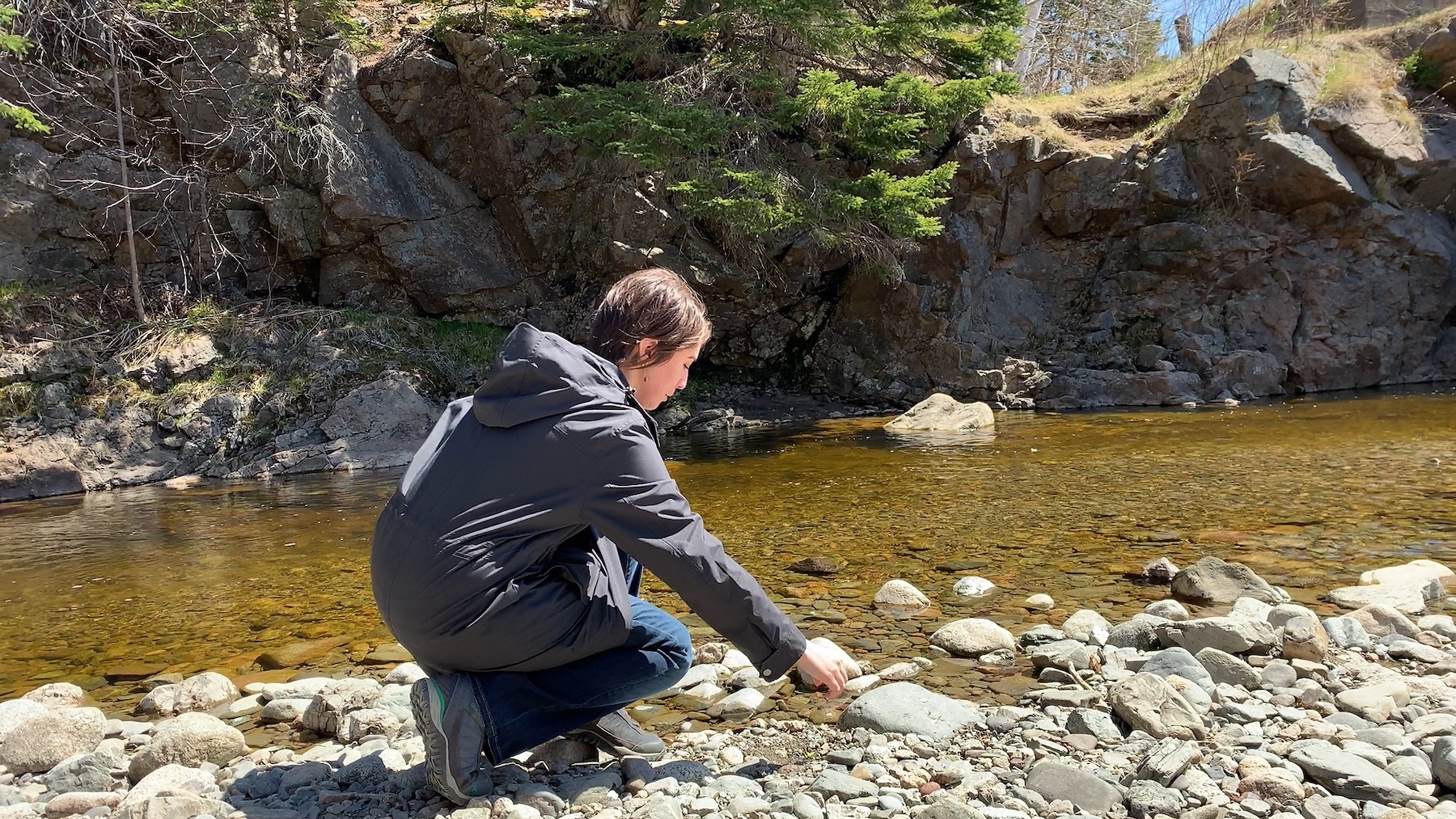‘Mutual respect’ a guiding principle for young Mi’kmaw conservationist

caption
Kieran Johnson applies Two-Eyed Seeing to her work at the Qamsipuk River.For as long as Kieran Johnson can remember, she’s been learning from Mi’kmaw Elder Albert Marshall.
The Eskasoni-based conservationist, a distant relative of Marshall, recalls many gatherings and family events hearing him talk of conservation, the value of nature and Two-Eyed Seeing — his concept of balancing traditional Indigenous knowledge with contemporary science.
Kieran is now 24 and works as a species-at-risk mapping co-ordinator with the Eskasoni Fish and Wildlife Commission in Unama’ki (Cape Breton). She works along the Qamsipuk River, scanning the ground for signs of local endangered species such as the wood turtle.
“I try to use Two-Eyed Seeing in my life as it’s a guiding principle that is action oriented,” she says.
As a teenager, Kieran attended Nikani Awtiken, a Mi’kmaw ecological knowledge camp for youth put on by the Unama’ki Institute of Natural Resources. The camp emphasized Marshall’s teachings.
“In my culture, it’s all about just diversity and keeping things healthy, not just taking, taking, taking,” Kieran says. “It’s all about mutual respect, making sure you know that the natural world is good. It’s just important to me.”
Kieran also has a background in contemporary sciences. She graduated from the Natural Resources Environmental Technology Program at the Nova Scotia Community College in 2020. She began working with Eskasoni Fish and Wildlife soon after.
In addition to field work, Kieran speaks with community members to see if anyone has spotted a species at risk.
“Then it’s my job to make sure [those species] are put on a map so that it can be given to the bands to help them to make better land use planning decisions,” she says.
Johnson’s work supports the Indigenous Protected and Conserved Areas (IPCA) process at the Eskasoni watersheds.
The watersheds are a collective of streams, lakes and rivers, including areas such as Loon Lake and Qamsipuk River, that flow into the Eskasoni community.
Tom Johnson, executive director of Eskasoni Fish and Wildlife, says the work being done at the watershed is important.
“If we protect that area, it also protects our groundwater supply, which feeds drinking water to our community,” he says.
According to the Conservation Through Reconciliation Partnership, “IPCAs are lands and waters where Indigenous governments have the primary role in protecting and conserving ecosystems through Indigenous laws, governance and knowledge systems.”
For Tom, bringing people back to the lands is a key goal.
“The whole goal is for them to visit these lands and come out of these lands as a better person, with more knowledge — and traditional knowledge — in regard to how we can preserve biodiversity within that particular area,” he says.
The wood turtle, a small, orange and black-brown turtle, was listed under the Nova Scotia Endangered Species Act in 2000. Although these turtles don’t fall under the jurisdiction of the IPCAs, their watershed does.
Kieran says there are many reasons for wood turtles to be at risk. Female wood turtles lay their eggs from mid-May to June along rivers and roadsides, leaving them vulnerable to different predators, including raccoons, foxes and coyotes.
She doesn’t want people keeping wood turtles as pets.
“I can understand why kids see them and are just like, ‘Wow!’ and want to pick them up and play with them or take them. But don’t do that. If you see turtles, just leave them alone,” Kieran says.
Her work with the wood turtles is an example of how she uses Two-Eyed Seeing and other Elder teachings in her life.
“I am no better than anything here, and I am no superior to anything here,” she says. “Everything is to be respected. [Wood turtles] play a very important role; if you affect one thing, you affect everything.”
Kieran says she is expanding her focus to include the local bee population. This will help to identify which species could be at risk.

